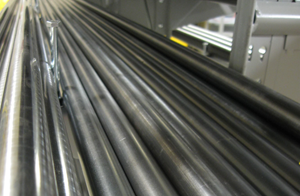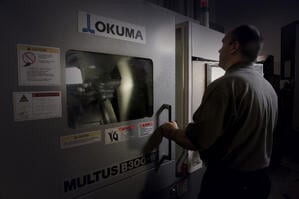Practical Machinist online community and industrial equipment supplier Grainger conducted a survey in early 2016 to find out how metalworking manufacturing is changing.
Practical Machinist online community and industrial equipment supplier Grainger conducted a survey in early 2016 to find out how metalworking manufacturing is changing.
 Today’s turning machines and horizontal machining centers (HMC) are more accurate and repeatable then ever before and provide increasingly faster spindle speeds. Sophisticated, intelligent controls like the Okuma OSP THINC system easily execute complex programs while managing extensive production schedules. And with designed-in features that compensate for thermal influences, help you avoid turret crashes and make setups and programming easier, CNC machine shops can make accurate parts faster and more cost-effectively.
Today’s turning machines and horizontal machining centers (HMC) are more accurate and repeatable then ever before and provide increasingly faster spindle speeds. Sophisticated, intelligent controls like the Okuma OSP THINC system easily execute complex programs while managing extensive production schedules. And with designed-in features that compensate for thermal influences, help you avoid turret crashes and make setups and programming easier, CNC machine shops can make accurate parts faster and more cost-effectively.
 A survey of 358 CNC machine shops conducted by Modern Machine Shop Magazine sought to identify reasons why some shops are more successful than others. These “Top Shops” had gross sales almost 20% higher than average and grew gross sales from 2009 to 2011 by 51.6%, on average, versus 25.1% for the industry as a whole. They typically have fewer employees per dollar of income, and they spend a larger percentage of gross sales on capital equipment.
A survey of 358 CNC machine shops conducted by Modern Machine Shop Magazine sought to identify reasons why some shops are more successful than others. These “Top Shops” had gross sales almost 20% higher than average and grew gross sales from 2009 to 2011 by 51.6%, on average, versus 25.1% for the industry as a whole. They typically have fewer employees per dollar of income, and they spend a larger percentage of gross sales on capital equipment.
 Nothing is more frustrating to any CNC machine shop than an idle machine tool. When spindles aren’t turning you’re not making chips which means lost productivity. That’s why quick, efficient and accurate setups are so important.
Nothing is more frustrating to any CNC machine shop than an idle machine tool. When spindles aren’t turning you’re not making chips which means lost productivity. That’s why quick, efficient and accurate setups are so important.
Smart manufacturers are continuously looking for more and better ways to reduce production costs. Faster, more precise CNC machine tools aided by robotic-based automation and pallet loading systems are proven ways to boost productivity. However, there’s more to reducing overall production costs than using the latest technologies. For optimum efficiency, manufacturers must consider all aspects of the process from part design to raw materials, machining, quality assurance and delivery to the customer.